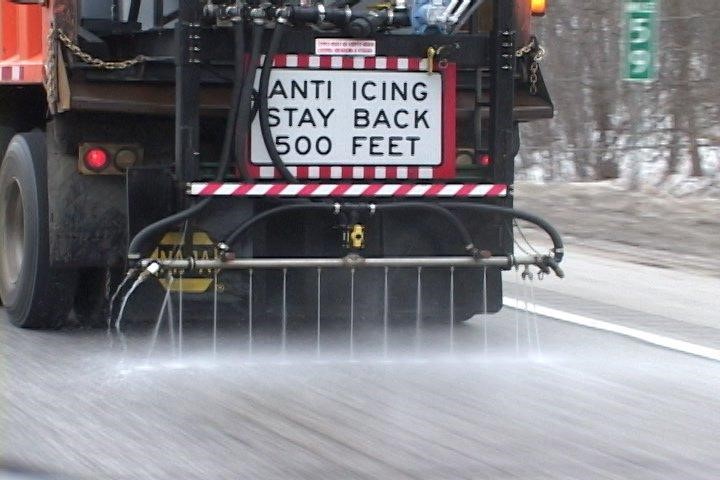The City of Sheboygan’s Department of Public Works began anti-icing practices in December 2016 and is continuing with it this winter season. Anti-icing applications and pre-wetting road salt reduces the amount of salt used during the winter season and provides clearer roads for Sheboygan residents. The DPW issues snow plowing updates on social media and on sheboygandpw.com throughout the course of the winter season.
According to the US Department of Transportation, more than 116,000 Americans are injured, and over 1,300 are killed on snowy, slushy, or icy pavement. Nearly 900 people are killed, and 76,000 people are injured in vehicle crashes during snowfall or sleet.
A Marquette University study “Accident Analysis in Ice Control Operations” found that applying road salt reduced crashes by 88%, injuries by 85%, and accident costs by 85%. Deicing pays for itself within 25 minutes after salt is spread.

The direct application of brine, also known as anti-icing, can be applied to road surfaces three days before a snow event. Applying the brine to the roadways will prevent the snow and ice from forming a bond with the road surface. By preventing the bond, it becomes easier to remove the snow from the roadway. The brine is dormant until it comes in contact with precipitation. According to the Salt Institute, anti-icing can reduce the total quantity of salt used during a storm by up to a factor of four.
On average, a ton of salt spread directly on the roadway can treat six miles of roadway. Brine made with a ton of salt can treat up to 20 miles of roadway.
The DPW intends to pre-treat the main arteries before snow events. The treatment leaves white strips that resemble chalk lines on the main roads. The DPW will not pre-treat streets if it will rain before the snow or if the pavement temperatures are below 20 degrees.
All DPW salt and plow trucks can now apply brine to the salt as it is applied to the road surface. Applying brine to road salt is called pre-wetting. According to recent studies, pre-wetting salt can reduce salt usage by 30%. Pre-wetting the salt with brine activates the salt and it starts working when it comes in contact with road. Dry salt needs to contact precipitation before it begins to work. When dry salt is applied to roadways, researchers has found that up to 30% of the salt bounces and scatters into the curb lines. Pre-wetted salt does not bounce as much and stays in the roadways.
Research conducted by the College of Engineering at Montana State University concluded that “Anti-icing and pre-wetting both present a viable option in reducing materials applied to roadways and maintenance costs while providing safer traveling conditions. Both practices also lead to less corrosion and environmental impacts due to snow and ice control operations”.
►Wisconsin Salt Awareness Week is January 11-15, 2021, more info and video links at www.wisaltwise.com/Take-Action/Salt-Awareness-Week
